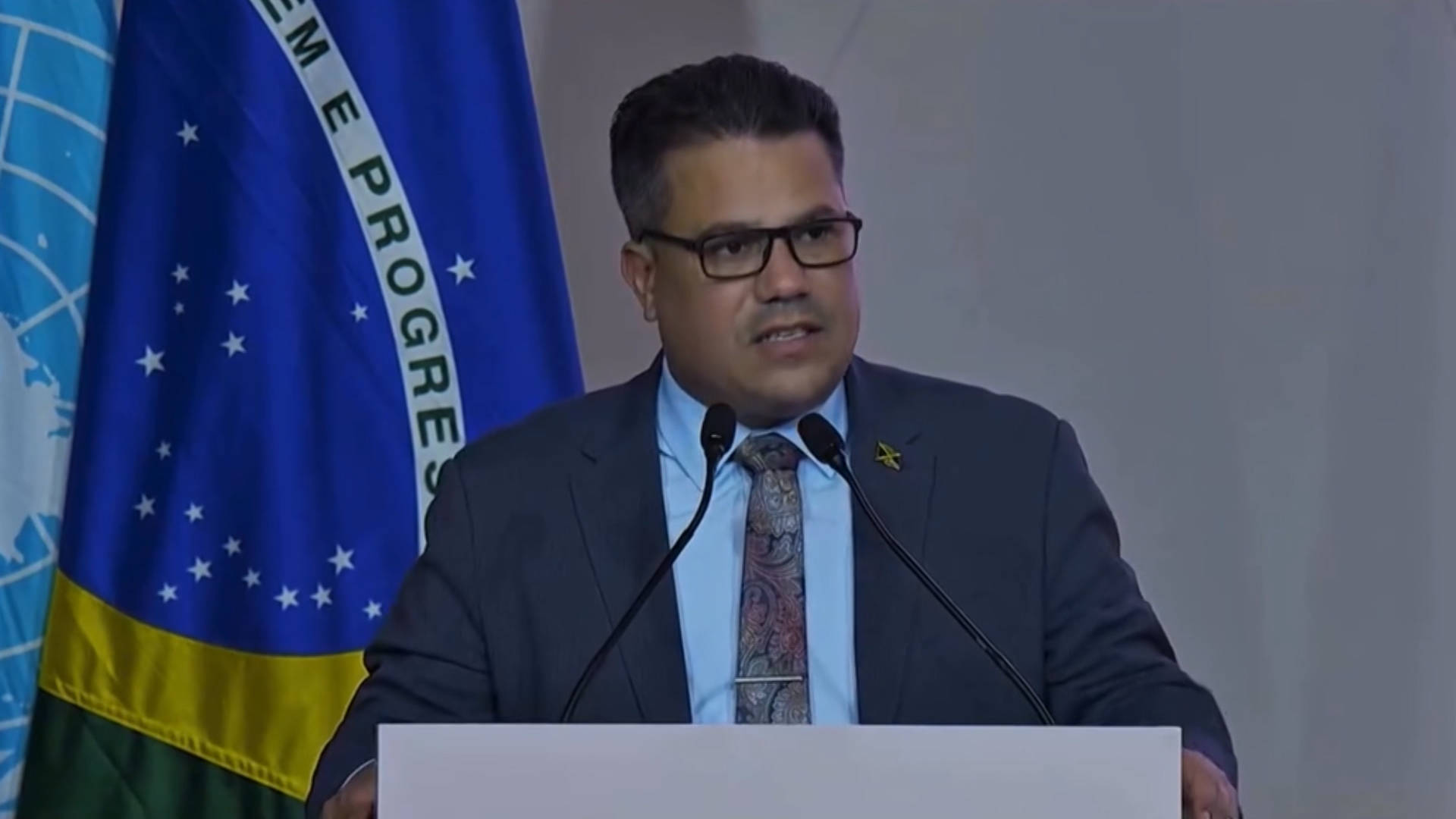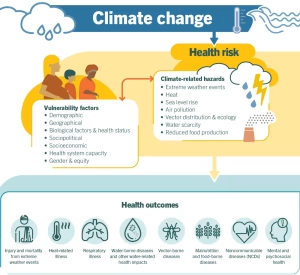Jamaica Leads Call of Island Nations for Urgent Action at COP30 Climate Summit – Democracy Now!

Report on COP30 Climate Summit: Vulnerable Nations’ Plea for Climate Action and Scrutiny of Fossil Fuel Lobbying
Vulnerable Nations Demand Urgent Climate Action Aligned with SDG 13
At the COP30 climate summit in Belém, Brazil, a coalition of vulnerable nations led by Jamaica is issuing a strong call for wealthier countries to implement significant emissions cuts. This appeal directly supports the objectives of Sustainable Development Goal 13 (Climate Action) by demanding urgent measures to combat climate change and its impacts.
- Economic Devastation and SDG Impact: Jamaican Economic Minister Matthew Samuda highlighted the severe economic consequences of climate-related disasters, citing the preliminary damage estimate of $10 billion from Hurricane Melissa. This figure, representing nearly one-third of the nation’s GDP, underscores the threat that climate change poses to SDG 1 (No Poverty) and SDG 8 (Decent Work and Economic Growth) in Small Island Developing States (SIDS).
- Call for Resilience and Partnership: Minister Samuda stated, “No small island state can absorb losses of this magnitude… We did not create this crisis, but we refuse to stand as victims. We choose action.” This declaration emphasizes the need to strengthen resilience as outlined in SDG 11 (Sustainable Cities and Communities) and calls for a robust global partnership, a cornerstone of SDG 17 (Partnerships for the Goals), to address the crisis equitably.
Fossil Fuel Influence and Carbon Capture Technology Scrutinized Under SDG 7
Concurrent with the pleas from climate-vulnerable nations, the summit’s integrity and commitment to clean energy goals are being questioned due to significant corporate lobbying presence. This raises concerns about progress towards SDG 7 (Affordable and Clean Energy) and the overall effectiveness of global climate negotiations.
- Lobbyist Presence: The Center for International Environmental Law (CIEL) has identified the attendance of over 500 lobbyists associated with carbon capture and storage (CCS) technologies at COP30.
- Critique of Carbon Capture: CIEL reported that the fossil fuel industry is leveraging the energy demands of Artificial Intelligence as a new narrative to promote CCS. The organization asserts that this technology is an “illusion” that fails to align with sustainability principles.
- Contradiction to Climate Goals: According to CIEL, CCS does not make fossil fuels clean or curb emissions; rather, it perpetuates their use and “locks in” emissions. This practice directly undermines the transition to renewable energy sources central to SDG 7 and obstructs the fundamental mitigation targets of SDG 13.
Analysis of Sustainable Development Goals in the Article
1. Which SDGs are addressed or connected to the issues highlighted in the article?
-
SDG 13: Climate Action
- The entire article is centered on the climate crisis, focusing on discussions at the COP30 climate summit. It highlights the urgency of taking action to combat climate change and its impacts, as seen in the call from vulnerable nations for wealthier countries to “cut emissions to help limit the effects of global warming.”
-
SDG 11: Sustainable Cities and Communities
- The article directly addresses the devastating impact of climate-related disasters on communities. The mention of Hurricane Melissa causing damages equivalent to “approximately a third… of our GDP” in Jamaica underscores the vulnerability of nations to such events and the need for resilient infrastructure and planning.
-
SDG 17: Partnerships for the Goals
- The setting of the article, the COP30 climate summit, is a global partnership in itself. The text describes the interactions between different stakeholders: vulnerable nations (Jamaica, Mauritius, Cuba), wealthier countries, and non-state actors like the “Center for International Environmental Law” and “carbon capture and storage lobbyists.” This highlights the complex, multi-stakeholder dynamics involved in achieving global goals.
-
SDG 7: Affordable and Clean Energy
- The article touches upon the debate surrounding energy sources and technologies. The critique of “carbon capture and storage” as an “illusion” that “cannot make fossil fuels ‘clean'” and “just keeps them burning” directly relates to the global transition towards sustainable and clean energy systems.
2. What specific targets under those SDGs can be identified based on the article’s content?
-
Under SDG 13 (Climate Action):
- Target 13.1: Strengthen resilience and adaptive capacity to climate-related hazards and natural disasters in all countries.
- This is directly addressed by the Jamaican minister’s statement about the impact of Hurricane Melissa and his assertion that “resilience must not be defined as surviving the unbearable.” The massive financial loss shows a lack of resilience to climate-related hazards.
- Target 13.2: Integrate climate change measures into national policies, strategies and planning.
- The call from Jamaica for “wealthier countries to cut emissions” is a demand for stronger climate change measures to be integrated into the policies of those nations. The presence and influence of fossil fuel lobbyists also point to the ongoing battle over policy and strategy at the international level.
- Target 13.1: Strengthen resilience and adaptive capacity to climate-related hazards and natural disasters in all countries.
-
Under SDG 11 (Sustainable Cities and Communities):
- Target 11.5: By 2030, significantly reduce the number of deaths and the number of people affected and substantially decrease the direct economic losses relative to global gross domestic product caused by disasters.
- The article provides a specific example of the economic losses targeted by this goal. The “preliminary estimates place damages around $10 billion U.S., or approximately a third… of our GDP” from Hurricane Melissa in Jamaica, directly highlighting the need to decrease such economic losses from disasters.
- Target 11.5: By 2030, significantly reduce the number of deaths and the number of people affected and substantially decrease the direct economic losses relative to global gross domestic product caused by disasters.
-
Under SDG 17 (Partnerships for the Goals):
- Target 17.16: Enhance the global partnership for sustainable development, complemented by multi-stakeholder partnerships.
- The COP30 summit is the context for this target. The article illustrates the partnership by showing different groups—vulnerable nations, wealthier countries, civil society organizations, and corporate lobbyists—interacting to influence global climate policy.
- Target 17.16: Enhance the global partnership for sustainable development, complemented by multi-stakeholder partnerships.
3. Are there any indicators mentioned or implied in the article that can be used to measure progress towards the identified targets?
-
Direct Economic Loss from Disasters
- The article explicitly provides data that can be used as an indicator. The “$10 billion U.S.” in damages from Hurricane Melissa is a measure of direct economic loss. This directly relates to indicators used for Target 11.5.
-
Economic Loss as a Proportion of GDP
- The statement that the damages represent “approximately a third, or just under a third, of our GDP” is a specific indicator of the scale of a disaster’s impact relative to a country’s economy. This is a key metric for understanding vulnerability and progress towards Target 11.5.
-
Greenhouse Gas Emissions
- This indicator is implied. The central demand from vulnerable nations for “wealthier countries to cut emissions” means that the level of greenhouse gas emissions is the primary metric for measuring the success of climate action and progress towards Target 13.2.
-
Corporate and Lobbyist Influence
- The mention of “over 500 carbon capture and storage lobbyists attending COP30” can be seen as a proxy indicator. It measures the presence and potential influence of specific interest groups (in this case, the fossil fuel industry) within global partnerships, which is relevant to understanding the dynamics of Target 17.16.
Summary of SDGs, Targets, and Indicators
| SDGs | Targets | Indicators |
|---|---|---|
| SDG 13: Climate Action |
13.1: Strengthen resilience and adaptive capacity to climate-related hazards.
13.2: Integrate climate change measures into policies and planning. |
Implied: The need for resilience in the face of unbearable climate events.
Implied: Levels of greenhouse gas emissions that need to be cut. |
| SDG 11: Sustainable Cities and Communities | 11.5: Substantially decrease direct economic losses relative to global GDP caused by disasters. |
Mentioned: Direct economic loss from a disaster (“$10 billion U.S.”).
Mentioned: Economic loss as a proportion of GDP (“approximately a third… of our GDP”). |
| SDG 17: Partnerships for the Goals | 17.16: Enhance the global partnership for sustainable development. | Mentioned: Number of industry lobbyists at a global summit (“over 500 carbon capture and storage lobbyists”). |
| SDG 7: Affordable and Clean Energy | 7.a: Enhance international cooperation to facilitate access to clean energy research and technology. | Implied: The debate over the viability and effectiveness of technologies like Carbon Capture and Storage (CCS) as a “clean” energy solution. |
Source: democracynow.org
What is Your Reaction?
 Like
0
Like
0
 Dislike
0
Dislike
0
 Love
0
Love
0
 Funny
0
Funny
0
 Angry
0
Angry
0
 Sad
0
Sad
0
 Wow
0
Wow
0
















































:focal(1500,1000)/https://media.globalcitizen.org/a6/9a/a69a4720-d8a1-4715-b596-18738d03c05c/rotary_polio_hero_image.jpg?#)







/countries/sri-lanka/photo-credit---dmc-sri-lanka.tmb-1200v.jpg?sfvrsn=dc298bcc_1#)



















